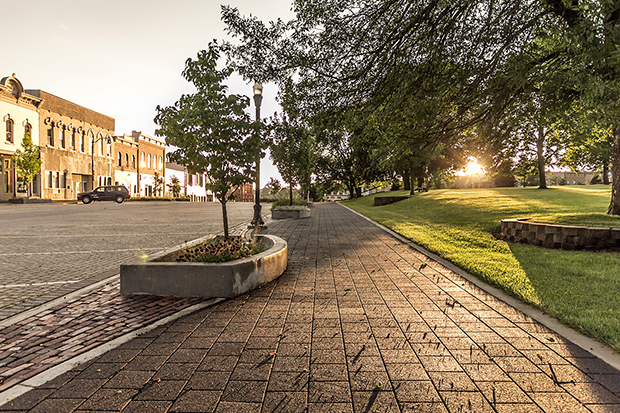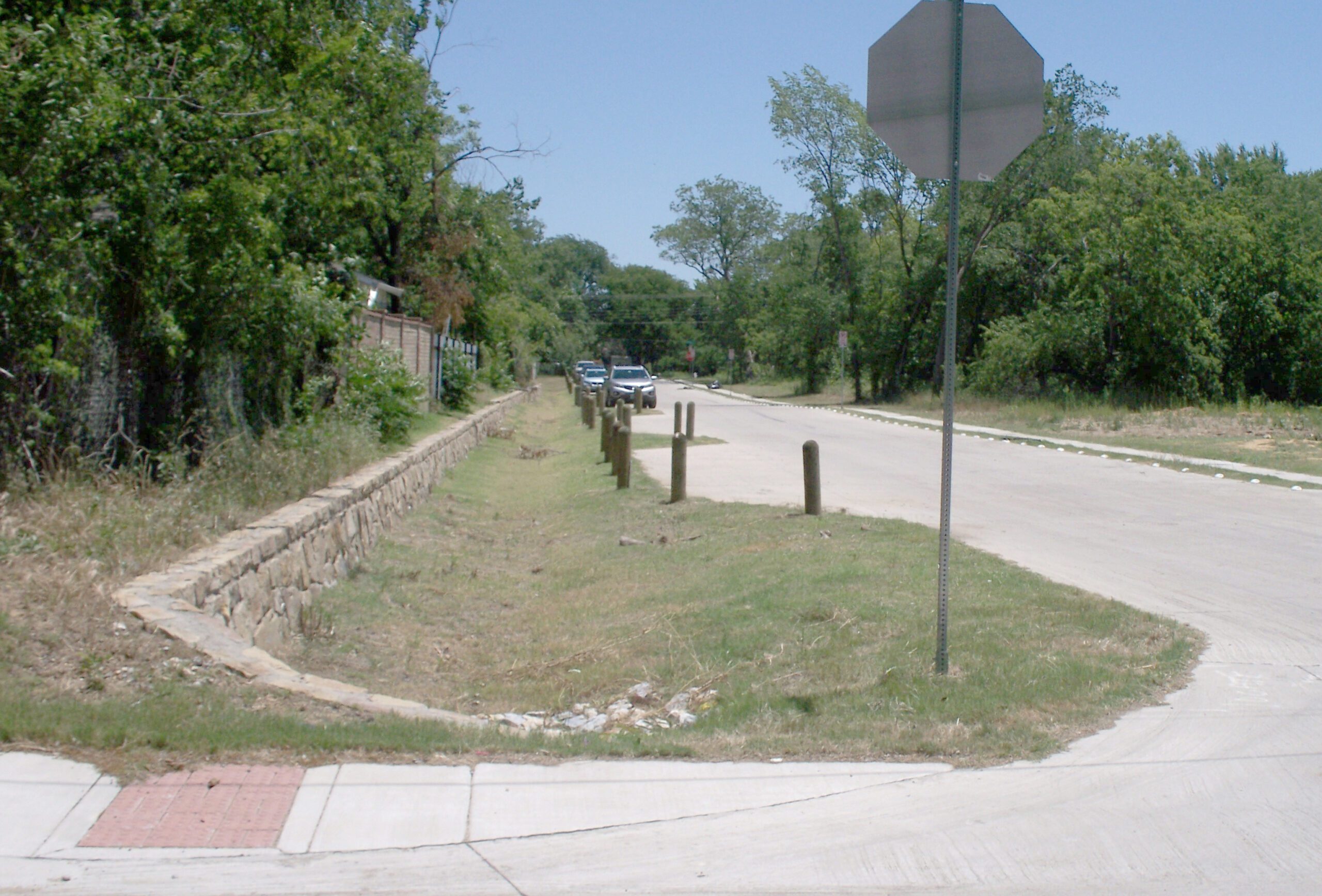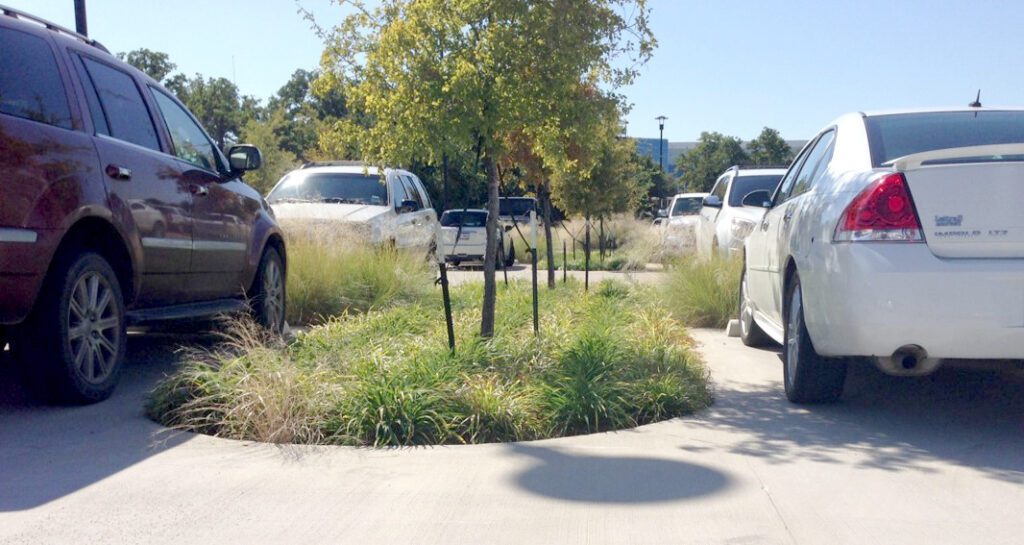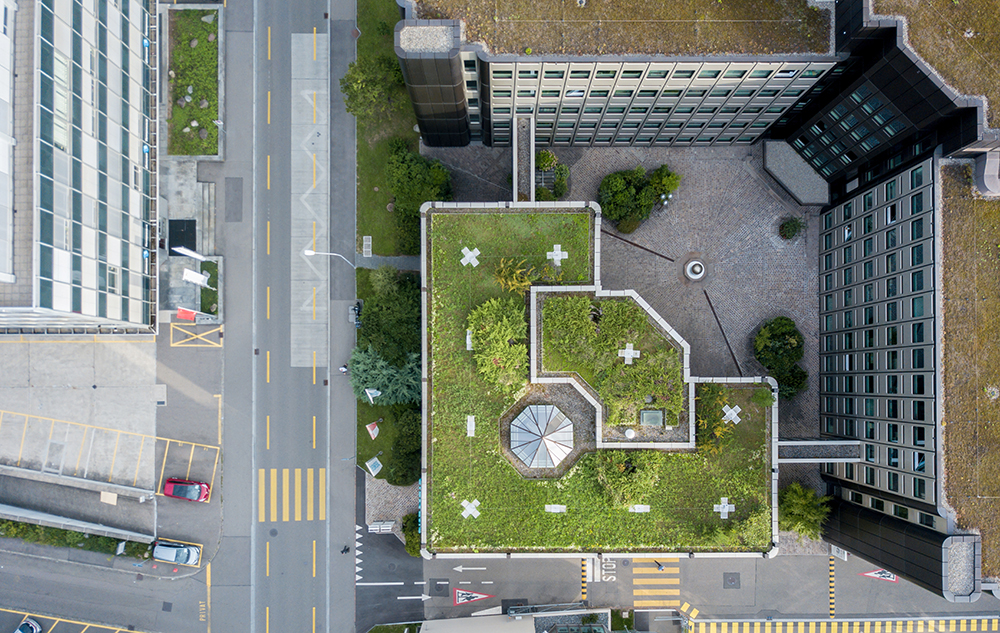Applying Low Impact Development Features That Are Practical
What do bioswales, detention/retention basins, vegetated rooftops, permeable pavers, constructed wetlands and rain barrels have in common? They are low impact development features.
It’s not unusual for a new development or revitalization project to take a more conventional route of removing stormwater via a pipe-and-pavement system. While effective, that method won’t remove pollutants or manage stormwater rates and volumes, therefore having impacts on water downstream.
Low impact development (LID) is a more sustainable solution that can have a positive effect on the well-being of people and provide many environmental benefits. Think of LID as a site drainage solution that is not only functional, but it can be more visually pleasing and treats water as a valuable resource instead of simply removing it.
LID components aim to manage stormwater as close to the source as possible. Applying LID principles can preserve or enhance natural features and minimize additional impervious surfaces within the development plan.
Permeable pavers allow stormwater to pass through the driving or walking surface. (Eric Doll/Shutterstock)
When, and Why, to Incorporate LID
Remember the old, roadside drainage ditches? Those are, in essence, LID features. They aren’t always thought of that way, but ditches are generally grassy swales that collect, convey—and when soil conditions allow—filter water back into the ground naturally. LID aims to re-create that process, which can be difficult in a largely developed area.
It is important to address any negative perceptions about the vision for LID and continue to educate people about its benefits. Successful projects, long-term performance information, and good design criteria all play into that. It’s also critical that LID features are installed properly because they are evolving methods and features. Poor application can lead to poor performance, and that often gives LID a bum rap.
LID features make the most sense financially when they can be used to allow more developable area. For example, rather than designing and constructing one large detention facility—a dry basin designed to hold stormwater temporarily—a system of several LID features, possibly including a smaller basin, might be integrated throughout a site. An interconnected system that can collect, convey and cleanse water may also be adapted to store and reuse runoff for site irrigation. This would be a great way to reduce runoff and conserve water.
A swale-and-pipe system infiltrates low flows, collects higher flows and provides a level of stormwater detention.
In terms of water quality, LID can be incorporated into areas where there is a concern about the quality of the stormwater discharge. Potential sediment and other pollutant reduction can enhance the stormwater quality.
Bioretention, the process of removing pollutants by moving stormwater through a planting bed containing engineered soil media, is a potentially cost-effective measure for improving water quality. Bioretention facilities can be incorporated a number of ways. If your development already has a significant landscaping requirement, such as in a high-profile commercial facility, it may be cost-effective to convert some of that landscape into a stormwater feature.
LID can also reduce drainage infrastructure construction. If you can create a park that serves a dual purpose because it also collects water, then that is an added benefit.
Bioretention is a LID technique that uses small landscape areas as incremental detention and helps improve water quality.
Types of LID Features
Incorporating LID practices into a development can be simple or complex, depending on a number of factors such as city requirements, available space, cost and maintenance.
-
A simple drainage swale or rain garden filled with native plants and placed strategically on-site can collect stormwater from rooftops or nearby parking areas. Landscaping improves the aesthetics of the property if done properly.
-
Rain barrels or larger cisterns are ideal for rainwater harvesting and storage in new or existing developments. Collected and stored water can be used later for irrigation.
-
Rooftop gardens are often more suitable in an urban development, where making a small footprint is essential. Rooftop gardens typically are more maintenance intensive, and because they are exposed to an arid or sunny environment, plant material selection is critical. Care must be given to the proper design of structural and drainage components so that maintenance issues are minimized or not created.
-
Permeable pavers or other porous pavement material can be used to improve stormwater runoff in parking areas. Taking it a step further, detention or rainwater harvesting systems can be designed beneath those surfaces to capture runoff.
-
Detention basins limit the rate of runoff, thereby providing flood protection.
-
A large greenfield area within a residential development may even allow for constructed wetlands, which allow pollutants to settle or be treated by vegetation.
A rooftop garden creates a pleasing LID amenity. (Mario Nowak/Shutterstock)
LID Barriers
LID design can be a more beneficial stormwater solution because more of the natural environment is being used. When stormwater detention and water cleansing methods are combined, then that becomes a big win for green infrastructure.
The two largest hurdles to implementing LID are usually cost and maintenance. It does typically cost more than conventional drainage methods. The challenge becomes whether you can turn an unsightly drainage feature into a more aesthetically pleasing amenity for the site. By being a good steward of the land and incorporating LID design, you can potentially create more developable area with a greater return on investment that can offset LID costs.
Owner understanding of the maintenance required for LID is a must. Many LID features function like a filter, and filters have to be cleaned occasionally. That is a good thing if you are trying to remove pollutants and improve water quality.
Constructability can be another impediment with LID as contractors who are not used to building LID features struggle to meet design standards and criteria. Not all contractors are familiar with the sequencing that has to take place and the care of LID facilities throughout construction.
The bottom line is LID components may not be possible for every project, but they can play a large role in a development’s stormwater management program.
Sometimes, understanding the impact LID can have makes all the difference.
For more information about Halff’s Land and Site Development team, write to Info-Development@Halff.com.






